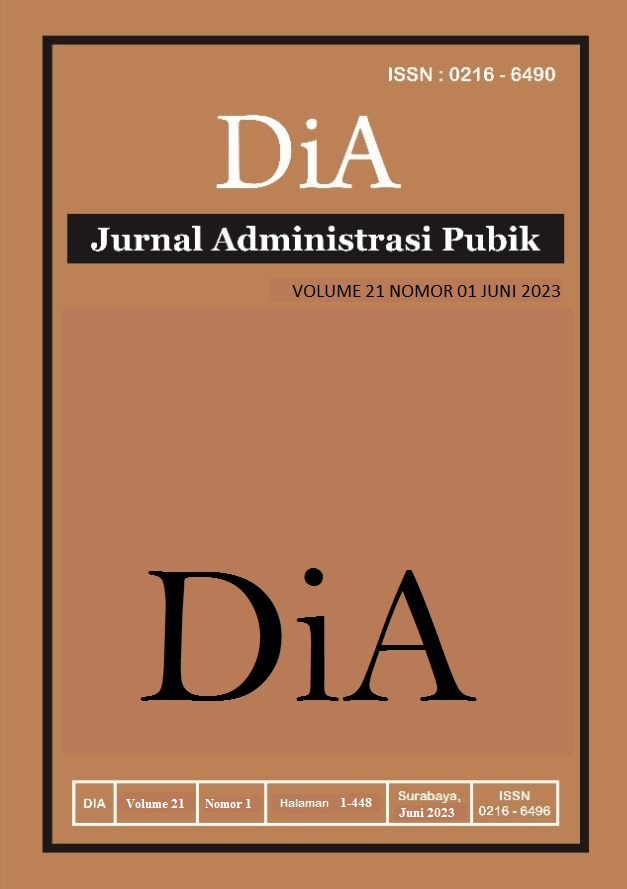INSTITUTIONALIZATION OF LOCAL WISDOM WEDDING PROCESSES IN CULTURE OF PUSAR VILLAGE, BATURAJA SUB-DISTRICT OGAN KOMERING ULU DISTRICT
Abstract
Culture is a knowledge system that includes a system of ideas contained in the human mind, so that in everyday life culture is abstract. The wedding procession with sacrifice, the slaughter of a scapegoat for the people of Pusar Village is one of the traditions owned by the people of Pusar Village, Baturaja District. The approach used in the meaning of verbal and nonverbal communication in a series of marriage processions with sacrifices, the slaughter of scapegoats uses symbolic interaction theory, symbolic interaction theory holds that individuals form the same meaning through communication. The method used is descriptive qualitative method. In collecting data, conducting in-depth interviews (Depth Interview) to key informants, the selected informants are people who are considered to know and understand the problems studied. The results of the analysis in this study are marriage processions with sacrifices, slaughtering scapegoats in Pusar Village there are forms of verbal communication and nonverbal communication contained in every series of marriage processions with sacrifices, slaughtering scapegoats including prayer. The prayer delivered by the traditional leader and followed by the family holding a wedding ceremony aims to request permission to hold a wedding ceremony and share happiness with the ancestors. After taking turns praying, the family waters the graves of their ancestors with the water that has been provided. From the results of the research conducted, it can be concluded that in every series of wedding processions with sacrifices, the slaughter of a scapegoat has a meaning that has been believed by the people of Pusar Village itself. It is hoped that the people of OKU Regency can participate in preserving the existing culture and arts. Especially in the cultural arts of the wedding procession with sacrifice, the slaughter of this scapegoat.
Downloads
References
Cangara, H. (2010). Introduction to Communication Studies. Jakarta: Rajawali Press.
Daryanto. (2010). Communication Studies. Bandung: PT. Prosperous Tutorial Tool.
Dictionary Drafting Team. (2002). Big Indonesian Dictionary (KBBI), third edition. Jakarta: Balai Pustaka
Effendy, O. U. (2011). Communication Studies. Bandung: Rosdakarya Youth.
(https://Diaspradina97.wordpress.com/task-task/data-data-agama/ slaughtering -animal –qurban)
Http://recordselektrokomunikasi.blogspot.com/2009/090elemenkomunikasi,html.
Koentjaraningrat. (2002). Introduction to Anthropology. Jakarta: PT. Rineka Cipta.
Listyawati, A., & Ayal, L. N. (2018). Local Culture as a form of Community Social Solidarity. Social Welfare Research Information Media, 42(3), 253–262. https://doi.org/10.31105/mipks.v42i3.2234
Moleong, L. J. (2013). Qualitative Research Methodology. Bandung: PT. Rosdakarya Teens.
Mulyana, D. (2010). Communication Studies. Bandung: Rosdakarya Teenagers.
Ningsih, O. (2019). The Existence of Customary Law in the Aspect of Marriage in the Bayan Village Community, Bayan District, North Lombok Regency [Mount Rinjani Selong University]. In Thesis. http://repository.ugr.ac.id:1015/id/eprint/55%0A
Prasetya, J. T. (2009). Basic Cultural Science. Jakarta: PT. Rineka Cipta.
Rahayu, P. H. (2016). The Nganter Dodol Tradition in the Marriage of the Ogan Tribe in Peninjauan Village, Peninjauan District, Ogan Komering Ulu Regency [Raden Fatah State Islamic University (UIN) Palembang]. In Thesis. http://repository.radenfatah.ac.id/id/eprint/2079
Rohim, H. S. (2009). Communication Theory: Perspective, Variety and Application. Jakarta: Rineka Cipta.
Ruslan, R. (2014). Research Methods Public Relations and Communication. Jakarta: Rajawali Press.
Sakir, I. M., Sriati, S., Saptawan, A., & Juniah, R. (2020). History of Floating Rice Nursery as Ogan Ethnic Local Wisdom Managing Wetlands. In Siti Herlinda, Ed. Food Source Commodities to Improve Health Quality in the Era of the Covid-19 Pandemic Palembang, 1179–1188. http://conference.unsri.ac.id/index.php/lahansuboptimal/article/view/1811/1111
Sihabudin, A. (2011). Intercultural Communication. Jakarta: PT. Bumi Aksara.
Soekanto, S. (2006). Sociology An Introduction. Jakarta: PT. Earth Literature.
Suprapto, T. (2011). Introduction to Communication Studies. Yogyakarta: PT. Fun Books.
Suwandi. (2008). Understanding Qualitative Research. Jakarta: Rineka Cipta.
West, R., & Turner, L. H. (2008). Introduction to Communication Theory Analysis and Applications. Jakarta: Humanika.
www.Rumaysyho.com. Minhatul'Allam Fii Syarhi Bulughil Marom, Shaykh'abdullah Bin Sholih Al-Fauzan, published by dar Ibnil Jauzi, first printing, year 1432 H, 9:273-276).
Zannah, U. (2014). The Meaning of the East Java Marriage Procession as Local Wisdom (Ethnographic Communication Approach in the Mayang Twin Redemption Ceremony in Jatibaru Village, Bungaraya District, Siak Regency, Riau Province). Let’s FISIP, 1(2), 105–112. https://www.neliti.com/id/publications/31788/makna-prosesi-perkawinan-jawa-timur-sebagai-kearifan-lokal-pendekatan-etnografi
Copyright (c) 2023 Icuk Muhammad Sakir, Marleni Marleni, Indah Pusnita (Author)

This work is licensed under a Creative Commons Attribution-ShareAlike 4.0 International License.
The DiA journal allows authors to retain the copyright of their papers without limitation. Authors may grant publishers non-exclusive publishing rights to publish articles. Granting first publishing rights to publishers also qualifies as unlimited copyright (because there are no restrictions imposed by publishers on author copyright).










